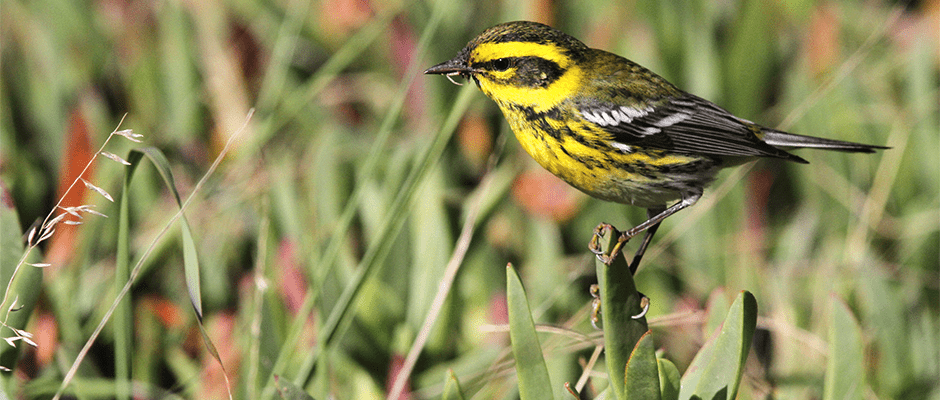Share this article
Migrating birds are getting more out of sync with the environment
By altering when leaves come out in the spring, climate change throws birds’ migration schedules out of sync with the environment, hindering their ability to reproduce, rear offspring and survive. Although they’re trying to adapt, recent research suggests, songbird species keep falling behind the pace of change across North America. Eastern birds arrive at their breeding grounds too late, researchers found, and western birds arrive too early.
“Climate change is causing the timing of spring green-up to shift and it’s also making it more variable and less predictable from year to year,” said Stephen Mayor, postdoctoral fellow at the University of Florida and lead author on the study published in Scientific Reports. “Birds are having trouble keeping up with that change, so they’re mistiming when they arrive to North America from their migrations.”
Previous studies had found that this mismatch was increasing for individual species at specific sites, so Mayor and researchers from the Memorial University of Newfoundland, University of Colorado, University of Connecticut, Illinois Natural History Survey, Evergreen College and Murdoch University in Australia decided to conduct a broader-scale investigation.
Using satellite data on vegetation, the scientists estimated when green-up occurred throughout North America from 2001 to 2012. They then combed through tens of thousands of observations from eBird, an online database where birders record sightings, to determine when 48 passerine species migrated into breeding locations across the continent over those 12 years.
The results indicated that nine songbird species were unable to adequately adapt their migration to the shifting time in spring when the landscape turned green. These birds included the scarlet tanager (Piranga olivacea), indigo bunting (Passerina cyanea), great crested flycatcher (Myiarchus crinitus), eastern wood-peewee (Contopus virens), rose-breasted grosbeak (Pheucticus ludovicianus), blue-winged warbler (Vermivora cyanoptera), northern parula (Setophaga americana), yellow-billed cuckoo (Coccyzus americanus) and Townsend’s warbler (Setophaga townsendi).
“The birds are shifting their arrival time in the right direction, earlier or later depending on the trees, but they’re lagging behind the change in spring green-up,” Mayor said. “On average, across all species, the mismatch was increasing five days per decade, or half a day per year. Some species were growing out of sync at double or triple that rate.”
In the East, he said, climate change is speeding up the season’s advent so that the birds, driven by light cues that remain constant, get there too late even after departing earlier than usual to compensate for the premature green-up. As a result, they miss the peak of ecological productivity, when insect prey is abundant.
In the West, “dramatic increases in mismatch” are occurring because spring is becoming progressively delayed, Mayor said. The birds fly in too early and encounter frigid conditions and scarce resources even though they begin their journey north later than they used to. The Townsend warbler’s breeding range greened up about three days later every year, Mayor said, but the birds got there only about half a day later per year, making the mismatch amount to two-and-a-half days per year.
His team is now digging into why some songbird species are able to adjust to the altering green-up more successfully than others. It’s also trying to gain a greater understanding of how climate drives the green-up, how the green-up drives insect availability and how this ultimately affects passerine species’ populations.
“The mismatch is intensifying as green-up changes more rapidly,” Mayor said. “Bird populations may decline as a result. The rapid rate at which birds are falling out of sync with their environment is unsustainable.”
Header Image: A Townsend’s warbler with an insect in its beak perches on a plant. ©Ryan Terrill








